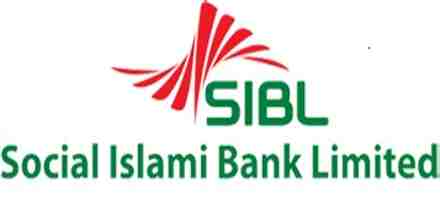The major objective of this report is to analysis Product line diversification and customer satisfaction of Social Islami Bank Limited (SIBL). Report also measure the level of customer satisfaction with various basic elements of service delivery systems of social Islamic bank. Here also focus on to identify consumer’s demand and fulfill their demand by supplying money. Finally draw SWOT analysis based on Product line diversification of Social Islamic Bank Limited.
Introduction:
Diversification research argues that new products are more successful when they leverage a firm’s intangible resources, which may support multiple activities without engendering rivalry for their use. However, numerous complementary resources may also be needed to exploit a firm’s intangibles. If these resources are in limited supply, or if it takes time to acquire and assimilate additional resource capacity, then new products may impose costs on existing products by cannibalizing the services of firm resources.
A central mission of diversification research is to understand the logic of the multiproduct firm (Teece, 1982). Although firms may choose to specialize and produce a single offering, single-product firms are the exception rather than the rule (Teece, 1994). In light of this, researchers seek to explain why firms compete with multiple products and to specify the performance consequences of this product-line diversification.
Should banks diversify across different products and geographic regions, or should they specialize? The focus versus diversification literature is well established in corporate finance, although there is not a general consensus as to whether conglomerates tend to perform better or more poorly that focused firms. Moreover, the findings in the general corporate finance literature may or may not be apply to the banking sector, because banks are different from other firms. Sometimes banks also face conflicting regulation and supervision that create incentives to either focus or diversify. Branching, entry, and asset investment restrictions often encourage focus, while supervisors tend to encourage diversification to reduce risks.
The banking industry is steadily shifting away from traditional sources of revenue like loan-making and toward nontraditional activities that generate fee income, service charges, trading revenue, and other types of noninterest income. Diversification strategies improve the performance of banks within the context of the current market crisis? This paper purposes to answer the preceding question by empirically verifying whether the choice of banks to see to a product and geographical diversification has increased their business profitability and its variability in the period 2005-2010, characterized by significant market instability. The recent financial and economic crisis has placed considerable strain on bank managements further to progressive increases in the default rates of loan portfolios, higher devaluations of balance sheet assets, trading account losses, tougher capital adequacy requirements laid down by supervisory authorities, reductions of the liquidity margins and, as a result, relative volatility of the overall business.
The empirical analysis proposed the advantages of a diversification choice in the selection of financial investments in terms of reduction in literature stem from different theoretical points of view and adopt different measurement approaches that, particularly in the banking sector, lead to anything but univocal results as regards the effects of diversification on corporate performances. For instance, in a study of the Italian banking market, Acharya et al. (2006) have pointed to a negative risk-return impact as the level of diversification of the lending portfolio relative to the period 1993-1999 increases. In this analysis, the diversification choice is expressed in terms of “macro-diversification”, that is as a strategy of both product and geographical international diversification of the loan portfolio. The product diversification studies relative to the banking sector adopt a variety of investigation perspectives. An initial research current studies the diversification strategy drawing a distinction between traditional lending activities and fee-based activities. A second research current inquires into the organizational profile of product diversification, examining the efficiency of the organizational diversification choices differentiating financial conglomerates from banking holding companies (Boyd and Grahm, 1986; Schwizer, 1996; Carretta, 2001; Monferrà, 2008). Finally, the theme of product diversification is analyzed in corporate finance studies with reference to the “diversification discount” to gain an insight into the effects of diversification on the quotations of the diversified banks (Elsas et al., 2010).
Besides, the choice of diversifying one’s business may involve the geography of the markets being served. From this perspective, the geographical diversification singles out the presence of banks over the national and international geographic territory. For instance, Shiers (2002) focuses on the banks’ choices to see to their geographical diversification within the same country, which show a growing effectiveness as the economic differences present within the territory of the country increase. In the same perspective, Hirtle (2007) shows how the increase in size of the branch network engenders a downturn in bank performance. As a result, a geographical diversification within the same country presupposes an increase in the functional distance of the bank, meant as the distance between the central management and the branch, and can produce repercussions on both the level of profitability and the extent of the exposure to intermediary risk (Alessandrini et al., 2005; Cotugno et al., 2010).
This study takes diversification research to a new level of analysis by examining the performance of a sample of banking relation to specialization, related, unrelated and mixed product-market strategies. It was proposed that firms that pursue related or unrelated diversification strategies outperform and grow faster than those that attempt to pursue both.
Related diversifiers had a relatively higher level of financial performance than unrelated and mixed diversifiers. A marginal correlation was found between unrelated and mixed modes of diversification and financial performance and sales growth. The regression analysis showed that related diversification has a significant impact on performance while unrelated diversification has a negative but non-significant impact on performance and growth.
Much of the work that has been done to date on diversification and performance has largely taken the form of anecdotal reports and case study analysis. Large sample studies are needed to demonstrate how diversification strategies may or may not enhance the performance of organizations. The present study aims to bridge the gap by examining the impact of diversification strategies on two organizational performance measures (profitability and growth) in a sample of 48 large scale companies. Most of the studies on this topic focus exclusively on a comparison of performance in firms that are using related diversification with those using unrelated diversification with many of such studies suggesting that performance defined in terms of profitability, growth, earnings per share, market share, etc is better in firms pursuing related diversification than in those pursuing unrelated diversification.
Objectives of the Study:
The objectives of the customer satisfaction:
The objective of the study is as follows:
- To measure the level of customer satisfaction with various basic elements of service delivery systems of social Islamic banks
- Which are the satisfaction dimensions that should be improved and how this improvement can be achieved?
- To identify consumer’s demand and fulfill their demand by supplying money.
Methodology of the study:
Methodology is an essential part for a research report. Methodology is the procedure how I will conduct with my report. To do this report I had taken some steps which are describe below-
Sources of Data
To conduct the research study, the researcher collected data from secondary sources. The secondary data has been collected from websites of SEBL & SIBL about product line diversification.
The researcher also collect the data from primary sources by using Questionnaire (Service Quality Survey).This primary information was used for understanding the customer satisfaction level of SIBL.
Data Collection Approach
The secondary data was collected from the internal server i.e., internally published journals and websites. In case of primary information data was collected by using Questionnaire. The sample size is 50. The number of variables is 10.
Literature Review
Customer satisfaction:
A key aspect in customer satisfaction is the way a customer can attain satisfaction or dissatisfaction with a company’s service. If a company wants to satisfy its customers the first question it needs to answer is what it that satisfies customers is and, equally important, what it is that makes customers dissatisfied with the company and its products and services. Satisfying customers depends on the balance between customers’ expectations and customers’ experiences with the products and services (Zeithaml et al., 1990). When a company is able to lift a customer’s experience to a level that exceeds that customer’s expectations, then that customer will be satisfied. Because customers have ever increasing expectations it is necessary for companies continuously to improve their quality and hence customers’ experiences with the company. The issue is what should be improved to keep the customers satisfied. What customers experience is not just one simple aspect of a company, but a whole range of aspects? Some of these aspects are concerned with the way customers experience the company itself, some are concerned with the way customers experience the physical product and, finally, some are concerned with the way customers experience the service the company offers.
Diversification:
Diversification is a form of corporate strategy for a company. It seeks to increase profitability through greater sales volume obtained from new products and new markets. Diversification can occur either at the business unit level or at the corporate level. At the business unit level, it is most likely to expand into a new segment of an industry that the business is already in. At the corporate level, it is generally very interesting entering a promising business outside of the scope of the existing business unit.
The different types of diversification strategies:
The strategies of diversification can include internal development of new products or markets, acquisition of a firm, alliance with a complementary company, licensing of new technologies, and distributing or importing a products line manufactured by another firm. Generally, the final strategy involves a combination of these options. This combination is determined in function of available opportunities and consistency with the objectives and the resources of the company.
There are three types of diversification: concentric, horizontal, and conglomerate. Those are given bellow:
Concentric diversification:
This means that there is a technological similarity between the industries, which means that the firm is able to leverage its technical know-how to gain some advantage. For example, a company that manufactures industrial adhesives might decide to diversify into adhesives to be sold via retailers. The technology would be the same but the marketing effort would need to change.
It also seems to increase its market share to launch a new product that helps the particular company to earn profit. For instance, the addition of tomato ketchup and sauce to the existing “Maggi” brand processed items of Food Specialties Ltd. is an example of technological-related concentric diversification.
The company could seek new products that have technological or marketing synergies with existing product lines appealing to a new group of customers. This also helps the company to tap that part of the market which remains untapped, and which presents an opportunity to earn profits.
Horizontal diversification:
The company adds new products or services that are often technologically or commercially unrelated to current products but that may appeal to current customers. In a competitive environment, this form of diversification is desirable if the present customers are loyal to the current products and if the new products have a good quality and are well promoted and priced. Moreover, the new products are marketed to the same economic environment as the existing products, which may lead to rigidity and instability. In other words, this strategy tends to increase the firm’s dependence on certain market segments. For example, a company that was making notebooks earlier may also enter the pen market with its new product.
Conglomerate diversification (or lateral diversification):
The company markets new products or services that have no technological or commercial synergies with current products but that may appeal to new groups of customers. The conglomerate diversification has very little relationship with the firm’s current business. Therefore, the main reasons of adopting such a strategy are first to improve the profitability and the flexibility of the company, and second to get a better reception in capital markets as the company gets bigger. Even if this strategy is very risky, it could also, if successful, provide increased growth and profitability.
Goal of diversification:
According to Calori and Harvatopoulos (1988), there are two dimensions of rationale for diversification. The first one relates to the nature of the strategic objective: Diversification may be defensive or offensive.
Defensive reasons may be spreading the risk of market contraction, or being forced to diversify when current product or current market orientation seems to provide no further opportunities for growth. Offensive reasons may be conquering new positions, taking opportunities that promise greater profitability than expansion opportunities, or using retained cash that exceeds total expansion needs.
The second dimension involves the expected outcomes of diversification: Management may expect great economic value (growth, profitability) or first and foremost great coherence and complementary to their current activities (exploitation of know-how, more efficient use of available resources and capacities). In addition, companies may also explore diversification just to get a valuable comparison between this strategy and expansion.
Strategies for Diversification:
A company which accepts diversification as a part of its planned approach to growth undertakes the task of continually weighing and comparing the advantages of these four alternatives, selecting first one combination and then another, depending on the particular circumstances in long-range development planning. While they are an integral part of the over-all growth pattern, diversification decisions present certain unique problems. Much more than other growth alternatives, they require a break with past patterns and traditions of a company and an entry onto new and uncharted paths. Accordingly, one of the aims of this article is to relate diversification to the over-all growth perspectives of management, establish reasons which may lead a company to prefer diversification to other growth alternatives, and trace a relationship between over-all growth objectives and special diversification objectives.
Product-Market Alternatives:
The term “diversification” is usually associated with a change in the characteristics of the company’s product line and/or market, in contrast to market penetration, market development, and product development, which represent other types of change in product-market structure.
Since these terms are frequently used interchangeably, we can avoid later confusion by defining each as a special kind of product-market Strategy.
- The product line of a manufacturing company refers both to the physical characteristics of the individual products (for example, size, weight, materials, tolerances) and to the performance characteristics of the products (for example, an airplane’s speed, range, altitude, payload).
- In thinking of the market for a product we can borrow a concept commonly used by the military the concept of a mission. A product mission is a description of the job which the product is intended to perform. For instance, one of the missions of the Lockheed Aircraft Corporation is commercial air transportation of passengers; another is provision of airborne early warning for the Air Defense Command; a third is performance of air-to-air combat.
- A product-market strategy, accordingly, is a joint statement of a product line and the corresponding set of missions which the products are designed to fulfill. In shorthand form if we let n represent the product line and if the corresponding set of missions, then the pair of IT and is a product-market strategy.
- A product development strategy, on the other hand, retains the present mission and develops products that have new and different characteristics such as will improve the performance of the mission.
OVERVIEW OF SOCIAL ISLAMI BANK LIMITED
Company Profile:
Social Islami Bank Limited (SIBL) is a banking company registered under the companies Act 1994 with its head office in 15 Dilkusha C/A, Dhaka-1000. The bank operates as a scheduled bank under a banking license issued by the Bangladesh Bank, Central Bank of the country. The Bank started its operation from 22, November 1995. SIBL is a capitalized new generating Bank with an authorized capital and paid up capital of Taka585 million in 2007 and also. 585 million respectively as of December 2006.Currently the bank has 24 branches of which 12 in Dhaka, 4 in Chittagong, 1 in Sylhet, 2 in Narayanganj, 1 in Borgia, 1 in Khulna, 1 in Rajsahi, 1 in Sirajgonj. The bank undertakes sall types of banking transaction to support the development of trade and commerce in the country. SIBL services are also available for the entrepreneurs to set up new venture and BMRE of industrial units. To provide clientele services in respect of international trade it has established wide corresponded banking relationship with local and foreign banks trade and financial interest home and abroad. Since the very inception, Social Islamic Bank Ltd. is working with the philosophy of serving the nationals as an ideal and unique financial house. Every organization has some objectives of its own. The prime objective of Social Islamic Bank Ltd. is to earn profit throw undertaking the responsibility of providing financial help for the development of the country’s commercial and industrial sector.
Mission of social Islami bank:
- High quality financial services with the latest technology.
- Fast, accurate and satisfactory customer service.
- Balanced & sustainable growth strategy.
- Optimum return on shareholder’s equity.
- Introducing innovative Islamic banking products.
- Attract and retain high quality human resource.
- Empowering real poor families and create local income opportunities.
- Providing support for social benefit organizations- by way of mobilizing funds and social service
Vision of social Islami Bank:
Social Islami Bank Ltd started its journey with the concept of 21St Century Islamic participatory three sector banking model: i) Formal Sector- Commercial Banking with latest technology; ii) Non-Formal Sector – Family Empowerment Micro-Credit & Micro-enterprise program and iii) Voluntary Sector – Social Capital mobilization through CASHWAQF and others. Finally, “Reduction of Poverty Level” is our Vision, which is a prime object as stated in Memorandum of Association of the Bank with the commitment” Working Together for a Caring Society”
Function of social Islami Bank:
- Mobilization of idle resources of the country by accepting Deposits from the general public.
- Granting Loans and Advances to the individual firms and companies for activating and developing trade, commerce and industries and other productive activities in the country.
- To give facilities to the client and shareholders in a systematic way.
- Give encouragement to the people for savings.
- To increase investment.
- To make easy transfer of foreign currency.
- To identify consumer’s demand and fulfill their demand by supplying money.
- To improve economy by borrowing financial facility.
- To assist capital market.
Definition of Diversification:
A risk reduction strategy that involves adding product, services, location, customers and markets to your company’s portfolio
A portfolio strategy designed to reduce and expose to risk by combining a variety of investments, such as stocks, bonds, and real estate, which are unlikely to all move in the same direction. The goal of diversification is to reduce the risk in a portfolio. Volatility is limited by the fact that not all asset classes or industries or individual companies move up and down in value at the same time or at the same rate. Diversification reduces both the upside and downside potential and allows for more consistent performance under a wide range of economic conditions.
Many small companies are one-trick ponies, betting their entire futures on a single product, a single service, a single location or even a single customer. And there’s nothing wrong with that in the beginning: A narrow focus lets startup concentrate energy on doing one thing extremely well.
Definition of ‘Product Line:
Product line is a group of products manufactured by a firm that are closely related in use and in production and marketing requirements. The product line refers to the number of different products offered in a product line.
For example, General Foods has about a dozen different products in its coffee product line. Each of these items is promoted as distinctive, although they share the same distribution channels and similar manufacturing facilities. McDonald’s has developed a food product line that includes several hamburger, fish, and chicken sandwiches. A product line may be targeted to a particular customer group, such as Skill home shop tools, or sold to various customer types through the same outlets, such as Ace Hardware Stores.
Product line is a group of products manufactured by a firm that are closely related in use and in production and marketing requirements. The depth of the product line refers to the number of different products offered in a product line.
At last we can say that’
A set of a related products sold by a single company or a group of related products manufactured by a single company. For example, a cosmetic company’s makeup product line might include foundation, concealed, powder, blush, eyeliner, eye shadow, mascara and lipstick products that are all closely related.
I know that product line includes related products but can someone define it for me properly so that I can tell by example what a product line is. For example, razors and shaving cream is complementary product but do they fall in the same product line – they are used together and both are necessary for the same purpose but they have slightly different usage. And is it just the common usage of the products that leads them to fall within a single product line? If yes then what about a hypothetical company that manufactures all cars, bikes and planes. We know that all of these products are used for transportation but I doubt that anyone would agree,
Product line Diversification:
Product line diversification involves modifying existing products in order to expand the market potential of a product. From changes in brands to changes in a product’s target market, product diversification can obtain new clients for your product by leveraging an existing product’s reputation and development platform to produce and sell a modified product. Successful product diversification requires accurate targeting and product differentiation to prevent eroding your current market and increase overall sales and profits. (By Laura Acevedo, 1981)
History:
In November 1961, the product line was diversified to include aluminum products for buildings Product line diversification is a concept first proposed by Edward Chamberlain in 1933. He put forward the idea that it was possible to distinguish one product from another in the mind of consumers, and that in doing so businesses could make products more attractive to a target market. During the early 20th century, as businesses became larger, advertising was increasingly used to communicate product differentiation to the masses.
It is difficult to sell a product to all people with the same sales pitch. Instead, different products are marketed to different customers. The role of product diversification is a product is to explain to consumers how the specific products will fit their specific needs. For Consumers, Bank instance, targets its advertising toward middle-class Americans, showcasing products that are suited to them rather than Wall Street investors. Advertising makes product line diversification more readily apparent to consumers than it would be otherwise.
Role of Product line Diversification:
Product diversification is an important aspect of any product line. One way to create product differentiation is through advertising. A great example of this is 7-Up, which has distinguished itself from competitors in advertisements as the “cola.” A clear understanding of the role of advertising in product diversification is necessary for anyone who wants to market or advertise a product.
Significance
The role of advertising in product diversification has taken on even larger significance in the 21st century. It has become possible to segment the market into very specific niches, and the rise of specialty television stations and Internet marketing has made it possible to target these niches better than ever before. Advertising is the most significant method of differentiating a product because it allows the advertiser to explain to consumers how the product is different. Wal-Mart, for instance, differentiates itself by advertising everyday low prices, to distinguish it from competitors who rely on sales and to appeal to people who are not looking for bargains, but consistently low prices.
Benefits
The role of advertising in product diversification has benefited both consumers and businesses. Businesses have been able to increase sales by communicating specific benefits of a product to specific consumers. Consumers have benefited because they have been made aware of products designed for their specific needs. BlackBerry, for example, advertises its smart phones as being capable of functions suited to business people, whereas the iPhone is advertised as a hip, trendy product for young people. Where it was once the case that consumers would be exposed only to mass-marketed products, they are now presented with products narrowly aimed at their needs and interests.
The importance of product line strategy:
- While measuring these parameters, they are mainly used for monitoring & control (to increase the performances of systems, etc), security & warning (to increase the safety of the system and anticipate default), diagnosis & analysis (to understand the system and improve it), interfacing & navigation (to operate the system and increase its functionalities).
- As sensors are becoming the central elements of bringing either new functionalities or reducing the total cost of ownership, they are now starting to be used to prevent issues rather than cure. For example, sensors are being developed for usage in early warning systems and intelligent maintenance schemes. Sensors are also key pieces in new electronics interfaces such as natural motion detection products.
- In addition to the aforementioned points, the way sensors are used also differs. While some sensors are used in stand-alone configurations, others are integrated within end-equipment.
- Aerospace & defense, industrial process and manufacturing, automotive, information technology infrastructure, building and infrastructure, laboratories and test, consumer medical healthcare, energy and networks security, environment and transportation, home appliances and the like are the different markets in which sensors are used. All of the devices (cell phones in consumer electronics, distributed control systems in oil and gas plants to name a few) rely strongly on input from the sensors.
The aforementioned points highlight the importance of sensors in terms of what they detect, how they function, where they work, etc. and also that sensor requirements from customers and applications vary widely. Nevertheless, customers prefer a one-stop-shop rather than having to depend on different manufacturers for different requirements. Therefore, the breadth and depth of one’s product line is important for a company to succeed in the sensors and instrumentation market.
Although a sensor manufacturer may choose to cater to only one or a few of the end-user markets, it is still important to have a broad product line that caters to all of the applications within that end-user market. For instance, water and wastewater is a broad target market for flow meter manufacturers. But the dynamics of this market are such that different customers within water and wastewater need different types of flow meters.
Customers are looking into the details of the sensor to make sure it is applicable to their situation and that it fulfils their requirements without being overly sophisticated. There are customers no longer willing to buy a sensor that provides 0.01% accuracy and costs twice. This is simply because their application does not need such high accuracy. There is no reason for customers to pay a high price for a sensor that is highly accurate but not needed. This is not necessarily because of any economic situation but because of the fact that customers have become much more focused on their requirements, clear on definitions and specifications of the products they need.
Customer requirements have shifted to pricing. In other words, manufacturers need to be able to produce low-, mid-, and high-end products i.e. increasing the product fit (standard to high-end sensors) across all the customer applications. This will help them target price-sensitive as well as less price-sensitive segments within a given mar
Findings and Analysis:
In this case study, I mainly focus on service quality & customer satisfaction level of SIBL. The sample size is 50.The numbers of variables are10. By using Questionnaire I try to take some inputs from the customers and try to understand the customer satisfaction level.
The sample size is 50. By using this variable I found this result,62% client moderately agree, 32% agree, 6% strongly agree, 0% strongly disagree, 0% Disagree, 0% moderately disagree & 0% Neutral.
By using this variable I found this result70% people moderately agree, 18% agree & 12% strongly agree.
By using this variable I found this result68% people moderately agree, 22% agree & 10% strongly agree.
By using this variable I found this result, 60% people moderately agree, 30% agree & 10% strongly agree.
By using this variable I found this result, 66% people moderately agree, 20% agree & 14% strongly agree.
By using this variable I found this result, 68% people moderately agree, 22% agree & 10% strongly agree.
By using this variable I found this result, 62% people moderately agree, 18% agree & 20% strongly agree.
The sample size is 50. By using this variable I found this result, 60% client moderately agree,24% agree & 16% strongly agree.
By using this variable I found this result,64% people moderately agree, 24% agree & 12% strongly agree.
By using this variable I found this result,60% people moderately agree, 28% agree & 12% strongly agree.
In the end of this finding we can see that majority percentage (%) of the clients are moderately agree, some are agree and few are strongly agree.
SWOT Analysis:
Strength:
- First strength is that it is a shariah based bank.
- By this time it has established an integral, customer friendly relationship with its clients.
- It has prominent saving scheme named DPS for a fixed or lower income group of people of this society.
- It provides services even after the banking hour to special clients.
- Sound profitability growth and high asset quality.
- Experienced management.
- Honest, sincere, and dedicated employee competency.
- Wide market share and stable source of fund.
- High attention on recovery of overdue amount or pre-overdue situation.
- Close monitoring on investment clients.
- High attention on individual performance.
- High attention on making quality investment and disposal of proposals.
- All the officials/ manpower are dedicated and honest to serve its own duty.
Weakness:
- Traditional network system and lack of full scale automation.
- Lack of required ideas in modern investment products.
- Poor marketing of investment products.
- Lack of required information specifically on SME.
- No growth on carrier advancement. So the employee wants to switch anywhere.
Opportunity:
- Scope of market penetration through diversified investment products.
- Increasing awareness of Islamic banking among the clients.
- Scope of develop new committed entrepreneurs.
- Country wide branches having wide opportunities to access in different kinds of business.
- Service charges in other banks are comparatively lower than SIBL
- No other banks could provide as much integral working atmosphere as Social Islamic Bank Ltd.
Threats:
- Because of the intense competition, most of the competitor banks of Social Islamic Bank are coming up with new service line ATM.
- State law defers with the Islamic Shariah.
- In the money market of Bangladesh there is no call money system of Islamic Shariah.
Questionnaire:
Service Quality Survey
Please help us to help you by completing this survey. The purpose of the survey is to improve the level of service in the Retail Banking.
Section
- Please indicate the extent to which you agree or disagree with the following statements about the service you received from the bank staff during your transaction.
- If you strongly disagree, please circle the number 1.
- If you strongly agree, please circle the number 7.
| Strongly Disagree | Strongly Agree | |||||||
| 1P) | Do you feel safe transaction with your Bank? | 1 | 2 | 3 | 4 | 5 | 6 | 7 |
| 2P) | Does your bank assure secure transaction? | 1 | 2 | 3 | 4 | 5 | 6 | 7 |
| 3P) | Do you feel satisfied interior & exterior design of your Bank? | 1 | 2 | 3 | 4 | 5 | 6 | 7 |
| 4P) | Do you feel satisfied in staff behavior of your Bank? | 1 | 2 | 3 | 4 | 5 | 6 | 7 |
| 5P) | Does your bank provide right attention in waiting time? | 1 | 2 | 3 | 4 | 5 | 6 | 7 |
| 6P) | Do you satisfy the employee behavior of your Bank? | 1 | 2 | 3 | 4 | 5 | 6 | 7 |
| 7P) | Do you feel satisfied the service charge of your Bank? | 1 | 2 | 3 | 4 | 5 | 6 | 7 |
| 8P) | Do you feel satisfied using technology of your Bank? | 1 | 2 | 3 | 4 | 5 | 6 | 7 |
| 9P) | When you have a problem your bank should show a sincere interest in solving it? | 1 | 2 | 3 | 4 | 5 | 6 | 7 |
| 10P) | Does your bank provide individual attention in any work? | 1 | 2 | 3 | 4 | 5 | 6 | 7 |
Conclusion:
In this we have to tell that product line diversification is a involve modifying existing products in order to expand the market potential of a product. From changes in brands to changes in a product’s target market, product diversification can obtain new clients for your product by leveraging an existing product’s reputation and development platform to produce and sell a modified product. Successful product diversification requires accurate targeting and product differentiation to prevent eroding your current mark although firms may choose to specialize and produce a single offering, single-product firms are the exception rather than the rule. In light of this, researchers seek to explain why firms compete with multiple products and to specify the performance consequences of this product-line diversification and increase overall sales and profits.
Product differentiation is a concept first proposed by Edward Chamberlain in 1933. He put forward the idea that it was possible to distinguish one product from another in the mind of consumers, and that in doing so businesses could make products more attractive to a target market. During the early 20th century, as businesses became larger, advertising was increasingly used to communicate product differentiation to the masses. Product line is a group of products manufactured by a firm that are closely related in use and in production and marketing requirements. The product line refers to the number of different products offered in a product line.
A key aspect in customer satisfaction is the way a customer can attain satisfaction or dissatisfaction with a company’s service. If a company wants to satisfy its customers the first question it needs to answer is what it that satisfies customers is and, equally important, what it is that makes customers dissatisfied with the company and its products and services. Satisfying customers depends on the balance between customers’ expectations and customers’ experiences with the products and services (Zeithaml et al., 1990). When a company is able to lift a customer’s experience to a level that exceeds that customer’s expectations, then that customer will be satisfied.
At last in a banking sector we have to say that SIBL overcome their limitation they must get success in the future. On the threshold of new foreign policy of looking towards east, the Banking sector plays a dominant role in the economic liberation of the country. Economic outlook of the country does not seem very bright and will take sometimes for recovery. Moreover with opening of branches of newly opened private banks the competition is intensifier
In spite of inflexible competition among Banks operating in Bangladesh, both foreign and local, SIBL has achieved satisfactory progress in areas of its operation and earned an impressive operating over the previous years. The bank will hope to achieve a satisfactory level of progress in all areas of its operation including target of profitability during the year 2010. From this internship work, several issues are found which needs to be emphasized for SIBL greater success. From both the observation and in-depth informal interview, it has been found that there is a gap indeed between what the economy expect (expectation level) and what actually it is getting (satisfaction level). In other words, many customers were dissatisfied due to some areas of incompetent services. So in order to sustain in the highly competitive banking industry, SIBL might take this issue under serious consideration
Recommendation:
- The entire department should be well informed regarding their goals and objectives. It is essential to execute company objectives into individual target.
- There have Office Order for allocation of responsibilities authority and accountability but it should be more precise for individual level.
- The bank should introduce more promotional activities at TV Channel.
- The bank should take the initiative to develop an effective research and development center to get innovative ideas to capture the competitive market.
- Proper training should be designed and imparted for all level of employee to adjust complex banking environment
- Branch should take necessary steps for Authorized Dealership License as soon as possible for doing foreign exchange business smoothly.
- To meet today’s urge of the customer, the bank should introduce E – Banking system, Credit Card and Automated Teller Machine (ATM).
- The bank has the provision of internship program but there is no organized structure for the internship program. The bank can properly utilize the internees at minimum cost.
- The bank should go for advertising about their services and facility for the clients. As a result banking activities will expand.
- To attract more clients, SIBL has to offer more products & services compare to the others bank.
















